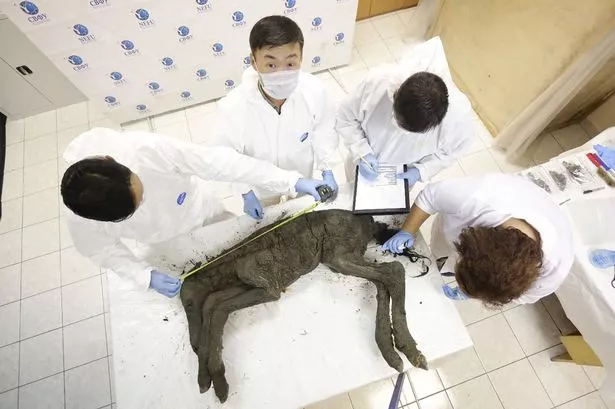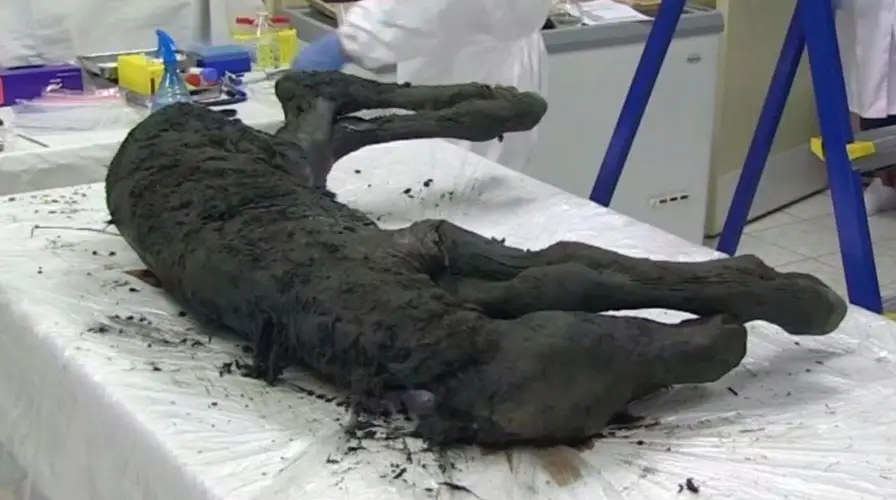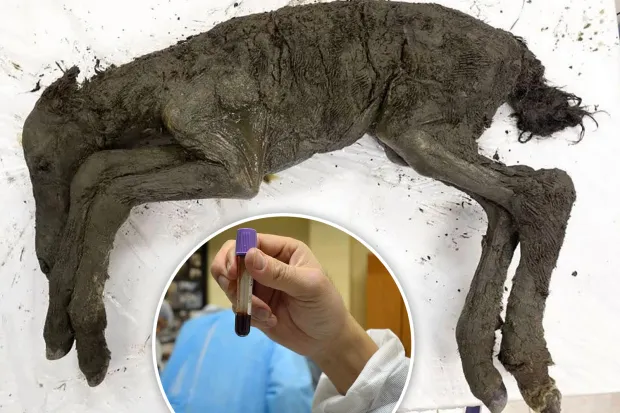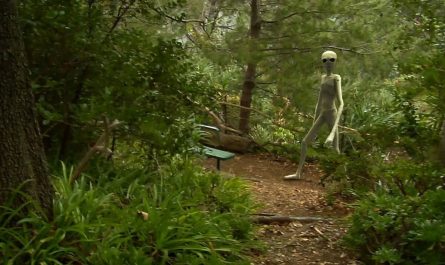A groundbreaking discovery in Siberia has stunned the scientific world. Scientists have found liquid blood preserved in the frozen remains of a 42,000-year-old foal, an extinct species of prehistoric horse. This discovery, made by an international team of scientists, marks the oldest liquid blood ever found and opens up incredible possibilities for reviving long-extinct species, including the enigmatic Lenskaya horse and potentially even the woolly mammoth. The blood, preserved in the permafrost of Siberia, offers hope for cloning technology to bring back these ancient creatures and study their genetics.

The Discovery:
The remarkable discovery was made within the permafrost of Siberia, where the foal’s remains were perfectly preserved for over 40,000 years. The liquid blood, which remained in a surprisingly well-preserved state, has fascinated researchers and fueled hopes that advanced genetic techniques may one day allow for the cloning of this extinct species. The foal, a member of the long-gone Lenskaya breed of horse, was discovered in remarkable condition, including its soft tissues and blood vessels, a rare find in the world of paleontology.
This discovery is not just a fascinating historical find—it is a milestone in the field of cloning and genetic research. The fact that blood, typically vulnerable to decay, has been preserved in such a state for over 40,000 years is extraordinary and provides new insights into how ancient life forms can potentially be revived using modern science.
Cloning and the Hope of Reviving Extinct Species:
The discovery of liquid blood has sparked new possibilities in the field of genetic cloning. With the DNA of the foal preserved in its blood, scientists are hopeful that they may be able to extract and study the genetic material in hopes of cloning the Lenskaya horse. This process involves extracting the preserved DNA from the blood cells and using advanced cloning techniques to potentially resurrect the species that roamed the earth during the prehistoric era.
This discovery also holds the potential to revive other long-extinct species. One of the most exciting prospects is the possibility of cloning the woolly mammoth, which, like the Lenskaya horse, was preserved in Siberian permafrost. For years, scientists have been working to unlock the secrets of mammoth DNA, and this discovery could be the breakthrough they need to bring these ancient giants back to life.
The preservation of genetic material in permafrost is providing a rare opportunity for scientists to explore and extract DNA from creatures that lived thousands of years ago. If successful, the revival of these creatures could provide valuable insights into the prehistoric world and the environmental conditions of ancient Earth.

Challenges and Ethical Considerations:
While the possibility of cloning extinct species is exciting, it also comes with significant challenges and ethical considerations. Extracting and analyzing ancient DNA is an incredibly complex process that requires cutting-edge technology and expertise. Even with the preserved blood, scientists face the task of ensuring the genetic material is viable for cloning and that the species can survive in today’s world.
Ethically, the cloning of extinct species raises many questions. Should we bring back animals that have been extinct for millennia? What impact would their reintroduction have on modern ecosystems? These are questions that scientists, ethicists, and the public will need to consider as this field of research progresses.
The Future of Cloning and Genetic Research:
The discovery of liquid blood in the foal’s remains provides an exciting glimpse into the future of cloning and genetic research. While we are still a long way from cloning fully functional extinct species, advancements in genetic technology continue to push the boundaries of what is possible. This discovery may lead to new techniques for reviving extinct species, studying their DNA, and understanding the ancient world in ways that were once thought to be science fiction.
As research on the foal’s blood and other ancient specimens continues, the potential for cloning and genetic restoration expands. The idea of bringing back creatures that once roamed the Earth could become a reality in the coming decades, and the scientific community is buzzing with anticipation about the possibilities.
Conclusion:
The discovery of liquid blood in the 42,000-year-old foal is a groundbreaking moment in the world of paleontology and genetic research. This rare find offers hope for the revival of extinct species, such as the Lenskaya horse and possibly the woolly mammoth, through cutting-edge cloning techniques. While the road to successfully cloning these ancient creatures is still long, this discovery has reignited interest in the potential for genetic restoration and the exciting possibility of bringing long-gone species back to life.

Stay updated on the latest developments in cloning and genetic research by following this ongoing story. As science continues to unlock the secrets of ancient life, we may one day witness the return of species that have been extinct for millennia. Share this remarkable discovery with others and continue to support scientific advancements that may shape the future of our planet and its ecosystems.





